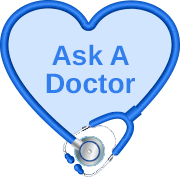
Varicose veins are enlarged, twisted veins that often appear dark purple or blue and are most commonly found in the legs and feet. They occur when the valves in the veins fail to function properly, causing blood to pool and veins to bulge. While often considered a cosmetic issue, varicose veins can also lead to discomfort, pain, or more serious complications such as ulcers or blood clots if untreated.
Varicose veins develop due to weakened vein walls and valves. Normally, veins carry blood back to the heart, and valves prevent the blood from flowing backward. When these valves become weak or damaged, blood can accumulate, leading to vein enlargement.
Several treatment options are available, ranging from lifestyle changes to medical interventions. The choice of treatment depends on the severity of the condition and patient preferences.
Compression stockings are specially designed to improve blood flow by applying consistent pressure to the legs. They can reduce symptoms such as swelling and discomfort but may not eliminate varicose veins.
For severe cases, surgical procedures such as vein stripping or phlebectomy may be necessary to remove or tie off problematic veins from professional vascular surgeons in Malaysia at Pantai Hospitals.
Although not all varicose veins can be prevented, certain measures can reduce the risk of developing them or prevent existing ones from worsening.
Varicose veins are a common condition that can cause discomfort and complications if left untreated. Understanding the causes, treatments, and preventive measures can help manage the condition effectively. If you suspect varicose veins or experience symptoms, consult our healthcare professionals at Pantai Hospitals for an accurate diagnosis and tailored treatment plan. You may book an appointment through our website or download the MyHealth360 application from Google Play Store or Apple App Store.
Pantai Hospitals have been accredited by the Malaysian Society for Quality in Health (MSQH) for its commitment to patient safety and service quality.
1.Sheikh, Z., Torres, A., & Mitchell, K. (2024, April 4). Vericose Vein Basics and Causes. WebMD. Retrieved January 25, 2025, from https://www.webmd.com/skin-problems-and-treatments/understanding-varicose-veins-basics
2.Varicose veins. (n.d.). NHS. Retrieved January 25, 2025, from https://www.nhs.uk/conditions/varicose-veins/
3.Varicose Veins. (n.d.). Johns Hopkins Medicine. Retrieved January 25, 2025, from https://www.hopkinsmedicine.org/health/conditions-and-diseases/varicose-veins
4.Varicose veins - Symptoms and causes. (2024, February 6). Mayo Clinic. Retrieved January 25, 2025, from https://www.mayoclinic.org/diseases-conditions/varicose-veins/symptoms-causes/syc-20350643

